Obesity Medication Use Remains Low Among Children | ADA 2025
Researchers explored the prevalence of obesity-related complications and obesity medication use in US children and young adults with obesity.
Despite a high prevalence of childhood and youth-aged obesity, the use of medications for treating obesity is persistently low among children and young adults (YA), according to an abstract presented at the American Diabetes Association’s 85th Scientific Sessions, held in Chicago, Illinois, from June 20-23, 2025.1
“Childhood obesity has skyrocketed in recent years,” wrote Stacy Leatherwood Cannon, MD, for Henry Ford Health.2 “While it’s a steady increase that began before COVID-19, the pandemic only exacerbated the issue. Children today are less active than they used to be—and they’re also facing an increased amount of stress.”
In recent history, childhood obesity statistics have indeed been alarming, with the US prevalence of youth-related obesity at 19.7% from 2017 to 2020. According to the CDC, that accounts for just under 15 million US children aged 2 to 19 years old who have obesity.3
While data shows that obesity has been on the rise among children in recent history, the overall complications spurred on by childhood obesity have been well documented.
READ MORE:
“Obesity in children and YA is associated with the early development of several obesity-related complications (ORCs),” wrote authors of the abstract.1 “Guidelines recommend treating obesity with medications and lifestyle changes.”
As the evolving cultural and technological landscapes may be taking away from children’s opportunities to stay active, pharmacological options have emerged as a significantly effective approach to treating obesity. With the rise in glucagon-like peptide-1s (GLP-1s) for treating obesity, their use among children has also increased. Authors of a Journal of the American Medical Association study found that adolescent use of GLP-1s “increased substantially” between 2020 and 2023.4
In their attempt to gain further knowledge on both obesity prevalence and medications used to treat it, researchers explored overall obesity trends among children and YA. “This study assessed the prevalence of ORCs and obesity medication (OM) use among children and YA with obesity in the United States,” they continued.1
Researchers conducted a retrospective, observational analysis using data from January 2019 to March 2024. The population criteria included patients with a diagnosis of obesity or body mass index (BMI) of 30 kg/m2 or higher. It also included individuals with a BMI greater than or equal to the 95th percentile of age and gender.
After analyzing participants that met inclusion criteria, researchers separated the population into 3 age groups: children (6-11 years), adolescents (12-17 years), and YA (18-25 years). The final analysis included 2333 children, 6097 adolescents, and 11,648 YA.
“Despite the high prevalence of obesity among children and YA, OM utilization remains low,” wrote authors of the abstract.1
In the final year of the analysis (2024), just 1.5% of adolescents and 5.7% of YA with obesity were prescribed OMs—predominantly GLP-1s approved for adults but used off label for younger people. Affecting children at 21.2%, adolescents at 17.2%, and YA at 15.7%, asthma was the most common ORC in each study cohort. Finally, a slew of comorbidities, including dyslipidemia, obstructive sleep apnea, and metabolic syndrome, were at least 2 times higher among OM users compared with non-users.
As GLP-1s continue to rise in familiarity, alongside the prevalence of both adult and childhood obesity, researchers believe more needs to be done to treat the disease among the younger population. While trends in obesity prevalence continue to rise, they are looking for ways to adopt GLP-1 treatment and other OMs within children’s medication regimens.
“OM users had a higher burden of ORCs than non-users,” concluded the authors.1 “The findings underscore the need for a holistic, chronic treatment model for children and young adults with obesity.”
Pharmacy practice is always changing. Stay ahead of the curve: Sign up for our
References
1. Xue J, Higgins C, Huang A, et al. Clinical characteristics and medication use in children and young adults with obesity in the United States. Presented at: American Diabetes Association 85th Scientific Sessions; June 20-23, 2025; Chicago, IL.
2. Cannon SL. How obesity can affect your child now—and later in life. Henry Ford Health. February 9, 2023. Accessed June 25, 2025. https://www.henryford.com/blog/2023/02/childhood-obesity-know-risks
3. Childhood obesity facts. CDC. April 2, 2024. Accessed June 25, 2025. https://www.cdc.gov/obesity/childhood-obesity-facts/childhood-obesity-facts.html
4. Lee JM, Sharifi M, Oshman L, et al. Dispensing of glucagon-like peptide-1 receptor agonists to adolescents and young adults, 2020-2023. JAMA. 2024;331(23):2041–2043. doi:10.1001/jama.2024.7112
Newsletter
Pharmacy practice is always changing. Stay ahead of the curve with the Drug Topics newsletter and get the latest drug information, industry trends, and patient care tips.






































































































































